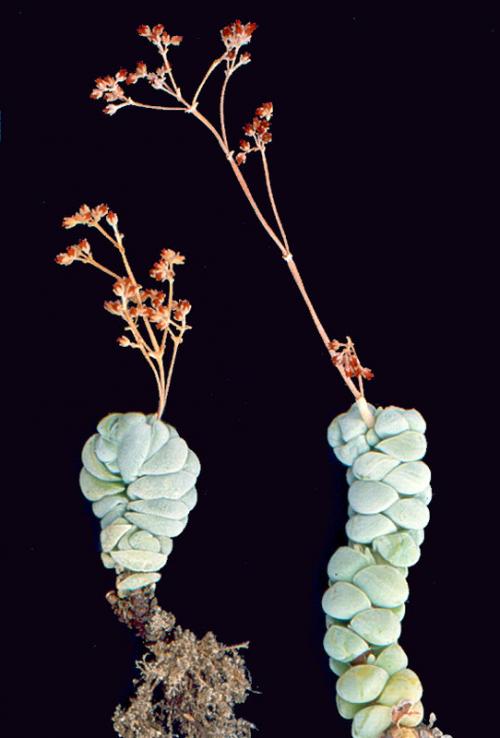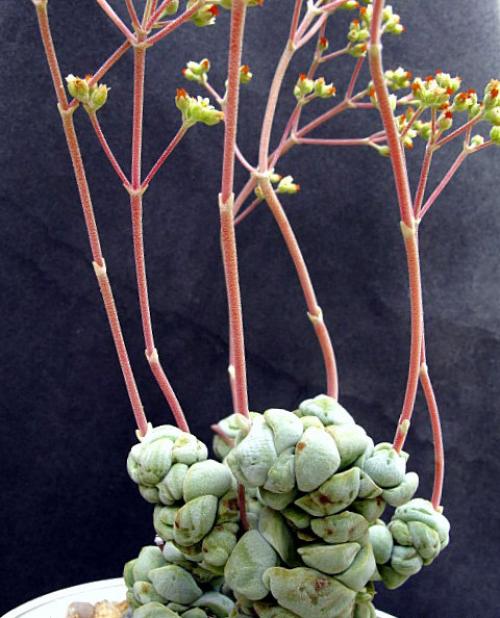Parsifal
Origin unknown.
Parentage probably Crassula alstonii x C. deceptor.
The plant is sold as C. alstonii, but it differs from this species by its elongating stem, leaves and peduncle being papillose and leaves arranged in 4 ranks. The diameter of the stems and the inflorescence resemble C. deceptor.
At left Crassula alstonii, at right C. 'Parsifal' :


